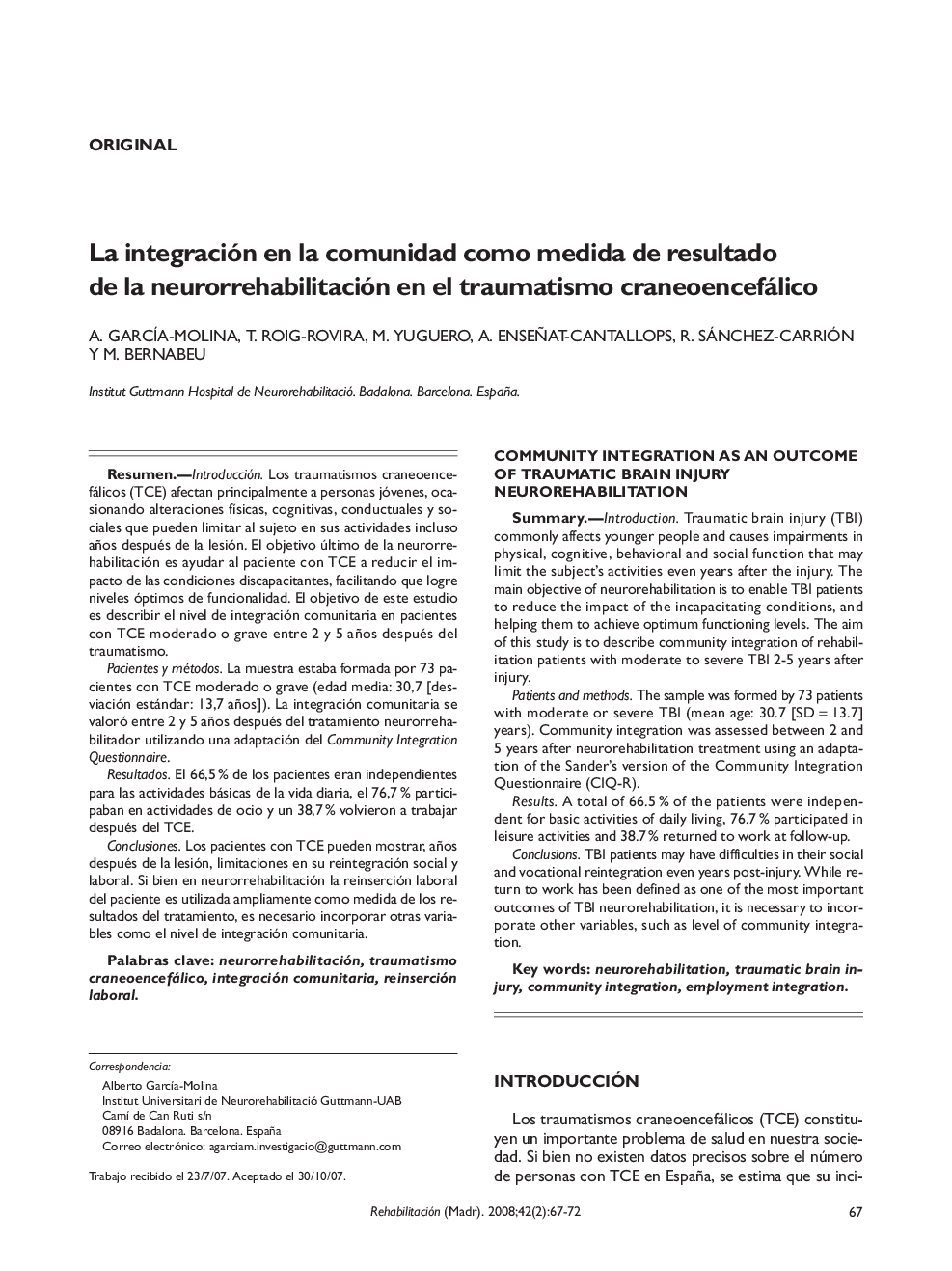| کد مقاله | کد نشریه | سال انتشار | مقاله انگلیسی | نسخه تمام متن |
|---|---|---|---|---|
| 4085285 | 1267839 | 2008 | 6 صفحه PDF | دانلود رایگان |

ResumenIntroducciónLos traumatismos craneoencefálicos (TCE) afectan principalmente a personas jóvenes, ocasionando alteraciones físicas, cognitivas, conductuales y socials que pueden limitar al sujeto en sus actividades incluso años después de la lesión. El objetivo último de la neurorrehabilitación es ayudar al paciente con TCE a reducir el impacto de las condiciones discapacitantes, facilitando que logre niveles óptimos de funcionalidad. El objetivo de este estudio es describir el nivel de integración comunitaria en pacientes con TCE moderado o grave entre 2 y 5 años después del traumatismo.Pacientes y métodosLa muestra estaba formada por 73 pacientes con TCE moderado o grave (edad media: 30,7 [desviación estándar: 13,7 años]). La integración comunitaria se valoró entre 2 y 5 años después del tratamiento neurorrehabilitador utilizando una adaptación del Community Integration Questionnaire.ResultadosEl 66,5 % de los pacientes eran independientes para las actividades básicas de la vida diaria, el 76,7 % participaban en actividades de ocio y un 38,7 % volvieron a trabajar después del TCE.ConclusionesLos pacientes con TCE pueden mostrar, años después de la lesión, limitaciones en su reintegración social y laboral. Si bien en neurorrehabilitación la reinserción laboral del paciente es utilizada ampliamente como medida de los resultados del tratamiento, es necesario incorporar otras variables como el nivel de integración comunitaria.
SummaryIntroductionTraumatic brain injury (TBI) commonly affects younger people and causes impairments in physical, cognitive, behavioral and social function that may limit the subject's activities even years after the injury. The main objective of neurorehabilitation is to enable TBI patients to reduce the impact of the incapacitating conditions, and helping them to achieve optimum functioning levels. The aim of this study is to describe community integration of rehabilitation patients with moderate to severe TBI 2-5 years after injury.Patients and methodsThe sample was formed by 73 patients with moderate or severe TBI (mean age: 30.7 [SD = 13.7] years). Community integration was assessed between 2 and 5 years after neurorehabilitation treatment using an adaptation of the Sander's version of the Community Integration Questionnaire (CIQ-R).ResultsA total of 66.5 % of the patients were independent for basic activities of daily living, 76.7 % participated in leisure activities and 38.7 % returned to work at follow-up.ConclusionsTBI patients may have difficulties in their social and vocational reintegration even years post-injury. While return to work has been defined as one of the most important outcomes of TBI neurorehabilitation, it is necessary to incorporate other variables, such as level of community integration.
Journal: Rehabilitación - Volume 42, Issue 2, April 2008, Pages 67–72